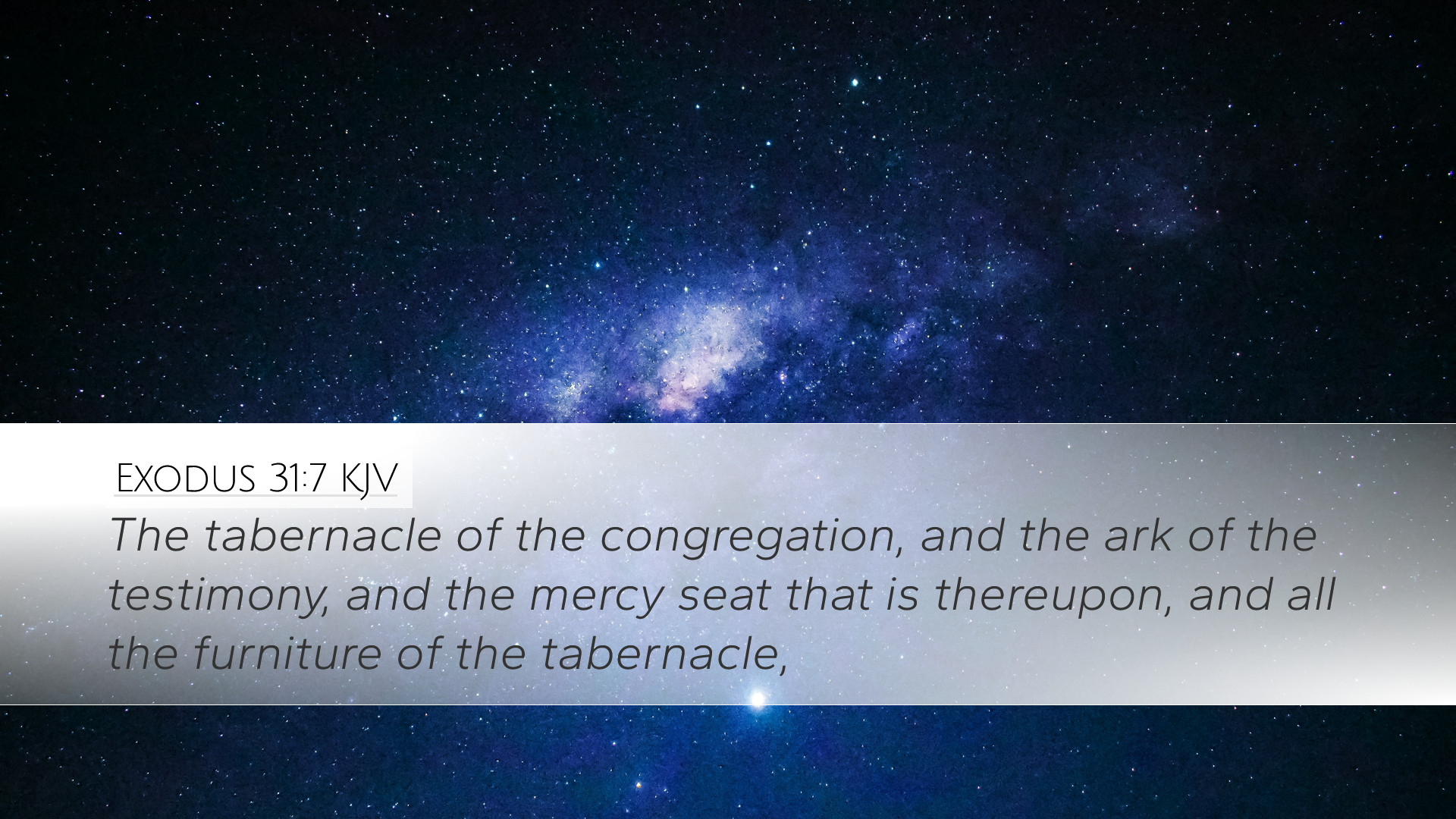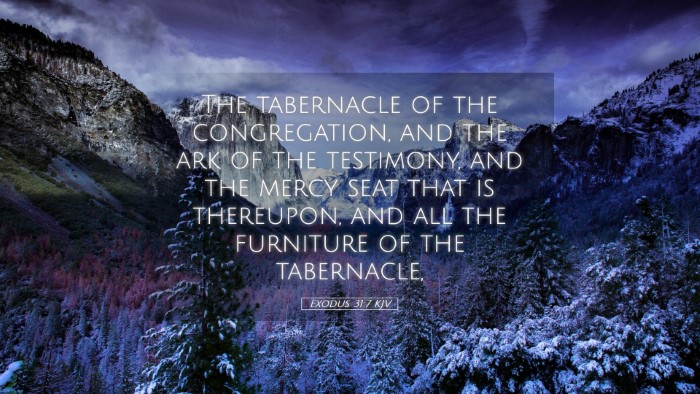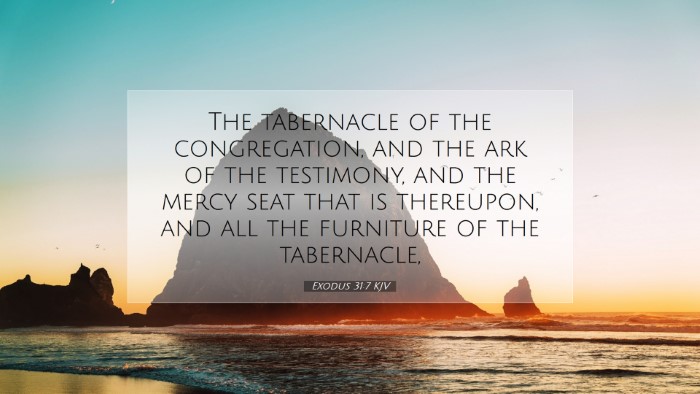Commentary on Exodus 31:7
Bible Verse: Exodus 31:7 - “In the tent of meeting, and the ark of the testimony, and the mercy seat that is thereupon, and all the furniture of the tabernacle.”
Introduction
This verse is part of God’s instructions to Moses regarding the construction of the tabernacle and its furnishings, emphasizing both the significance of the tabernacle in Israel’s worship and the divine design behind it. Commentaries from esteemed theologians such as Matthew Henry, Albert Barnes, and Adam Clarke shed light on the multifaceted meanings found within this text. Understanding this verse helps deepen the insight into God’s desire for His presence and fellowship with His people.
General Themes
- Divine Presence: The tent of meeting represents the place where God chooses to dwell among His people. The construction details reveal God’s intimate relationship with Israel.
- Significance of the Ark: The ark of the testimony, containing the tablets of the Law, signifies God’s covenant and the moral framework He provides.
- Mercy Seat: This element represents atonement and reconciliation, stressing the importance of God’s mercy toward Israel.
- Divine Design: The meticulous instructions highlight that even the smallest details matter in approaching God.
Insights from Commentators
Matthew Henry
Henry emphasizes that the tent of meeting is not merely a structure but a divine appointment where God and man meet. He points out that it illustrates the grace of God allowing mankind access to His holy presence. The ark, being the resting place of God’s glory among His people, symbolizes His eternal covenant and the significance of obedience to His commandments.
Albert Barnes
Barnes notes that the furniture mentioned in this verse is central to the worship practices of Israel. Each item has a distinct purpose that reflects aspects of God’s nature. The mercy seat, placed atop the ark, symbolizes atonement and serves as a basis for God’s relationship with His people. Barnes explicates how the furnishings associated with the tabernacle offer a foreshadowing of the ultimate sacrifice of Christ, fulfilling the need for reconciliation.
Adam Clarke
Clarke provides a detailed examination of the tabernacle's structure and its items, emphasizing the beauty and symbolism inherent in each part. He elaborates on the mercy seat, portraying it as a throne of grace where God meets with His people, highlighting the importance of reverence in worship. Clarke discusses the necessity of divine instruction in worship, asserting that proper worship stems from God’s revelation rather than human invention.
Practical Applications
- Approaching God: This passage encourages believers to recognize the importance of approaching God with reverence and respect.
- Understanding Worship: The specificity of the tabernacle’s design reminds congregants that worship should be grounded in scripture and divine guidance.
- Covenant Relationship: It illustrates the significance of being in a covenant with God and the responsibilities that come with it.
- Grace and Mercy: The mercy seat serves as a reminder of God's desire for reconciliation and grace towards those who seek Him.
Conclusion
Exodus 31:7 encapsulates the heart of God’s intention for the tabernacle and the worship of Israel. Not only does it establish a pattern for worship, but it also conveys profound theological truths about God’s presence, covenant, and mercy. The combined insights from Matthew Henry, Albert Barnes, and Adam Clarke provide a rich tapestry for understanding this verse, making it applicable for pastors, theologians, and students of the Word. By studying this verse and its surrounding context, believers can grasp the invitation to an intimate relationship with God, rooted in reverence and gratitude.


